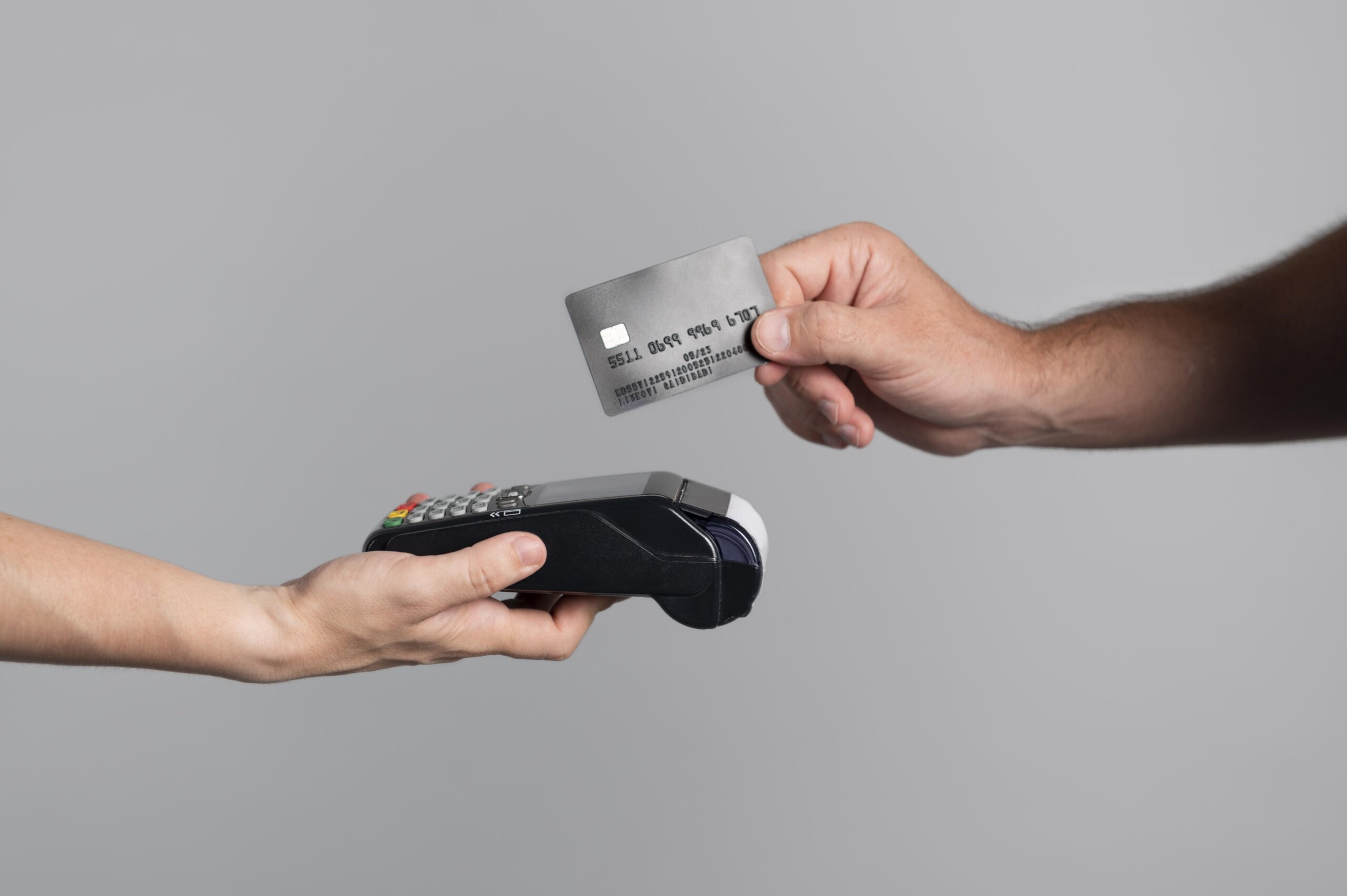How can personal trainers use NFC cards to share workout plans instantly?

Introduction to NFC Technology in Fitness
Near Field Communication technology has revolutionized the way we share information in our daily lives, and the fitness industry is no exception. Personal trainers are increasingly discovering the power of NFC cards to streamline their client interactions and create more efficient workout plan distribution systems. This technology, which operates through electromagnetic fields to enable communication between devices within close proximity, offers a seamless solution to one of the most persistent challenges in personal training: getting comprehensive workout plans into clients’ hands quickly and accurately.
The fitness industry has long struggled with the cumbersome process of sharing detailed workout routines. Traditional methods often involve handwritten notes, printed sheets, or lengthy explanations that clients may forget or lose. Personal trainers spend valuable time repeatedly explaining exercises, sets, and repetitions, time that could be better spent on actual training and motivation. NFC technology addresses these pain points by creating an instant, digital bridge between trainer expertise and client accessibility.
Understanding NFC Cards and Their Capabilities
NFC cards are small, programmable devices that can store various types of digital information and transmit this data to compatible smartphones or tablets with a simple tap. These cards utilize the same technology found in contactless payment systems and modern smartphones, making them universally accessible to most clients. The cards themselves are typically the size of a credit card or smaller, making them convenient to carry in wallets, gym bags, or even attached to keychains.
The storage capacity of NFC cards varies depending on the type and manufacturer, but most cards can hold several kilobytes of data. This capacity is sufficient to store comprehensive workout plans, including exercise names, repetition counts, set numbers, rest periods, and even links to instructional videos or fitness tracking applications. The beauty of NFC technology lies in its simplicity – clients don’t need to download special apps or create accounts to access the information stored on these cards.
Modern NFC cards can be programmed to trigger various actions on a client’s smartphone. They can automatically open specific fitness apps, navigate to particular websites, display workout routines, start timers, or even send pre-written messages to the trainer. This versatility makes NFC cards an incredibly powerful tool for personal trainers looking to enhance their service delivery and client engagement.
The Traditional Challenge of Sharing Workout Plans
Personal trainers have historically faced significant challenges when it comes to effectively sharing workout plans with their clients. The traditional approach often involves writing out exercises on paper, explaining complex movements verbally, or relying on clients to remember detailed instructions. This method is not only time-consuming but also prone to errors and misunderstandings.
Many trainers have attempted to address these challenges by creating digital workout plans using various apps or software platforms. However, sharing these digital plans often requires multiple steps, including adding clients to specific platforms, sending email invitations, or teaching clients how to navigate complex interfaces. These additional steps create friction in the client experience and may deter some clients from fully engaging with their workout routines.
The problem becomes even more pronounced when dealing with clients who are not particularly tech-savvy or who prefer simpler solutions. Elderly clients, for instance, may struggle with downloading apps or creating online accounts, while busy professionals might appreciate a more streamlined approach that doesn’t require extensive setup or learning curves.
How NFC Cards Transform Workout Plan Distribution
NFC cards fundamentally change the way personal trainers share workout plans by eliminating the friction typically associated with digital information transfer. When a trainer programs an NFC card with a client’s specific workout routine, the sharing process becomes as simple as tapping the card against the client’s smartphone. This immediate access removes barriers and ensures that clients always have their workout plans readily available.
The transformation goes beyond simple convenience. NFC cards enable trainers to create dynamic, interactive workout experiences that were previously impossible with traditional methods. For example, a trainer can program a card to not only display the workout routine but also automatically start a timer for rest periods, play motivational music, or even send progress updates back to the trainer’s system.
This technology also allows for real-time updates and modifications. If a trainer needs to adjust a client’s routine based on their progress or changing goals, they can update the information linked to the NFC card without needing to physically reprogram the card itself. This flexibility ensures that clients always have access to the most current version of their workout plans.
Setting Up NFC Cards for Personal Training
The process of setting up NFC cards for personal training begins with selecting the appropriate hardware and software solutions. Personal trainers need to choose NFC cards that are compatible with their intended use case and have sufficient storage capacity for their workout plans. Various manufacturers offer different types of NFC cards, ranging from basic models that can store simple text information to more advanced cards that can trigger complex actions on smartphones.
Once the hardware is selected, trainers need to choose programming software or apps that allow them to write information to the NFC cards. Many user-friendly applications are available that make this process accessible even to trainers without technical backgrounds. These applications typically provide intuitive interfaces where trainers can input workout information, select actions to trigger, and customize the client experience.
The setup process also involves creating standardized templates for workout plans to ensure consistency across all clients. Trainers can develop formats that include exercise names, sets, repetitions, rest periods, and any additional notes or instructions. This standardization not only makes the programming process more efficient but also ensures that clients receive consistent, professional-looking workout plans.
Technical Implementation and Programming
The technical implementation of NFC cards for workout plan sharing involves several key components that work together to create a seamless user experience. The programming process typically begins with trainers using specialized software or mobile applications designed for NFC card programming. These tools allow trainers to input workout data, configure card behavior, and test functionality before distributing cards to clients.
Programming an NFC card involves writing specific data structures that smartphones can interpret and act upon. This data might include simple text-based workout plans, URLs that direct clients to online resources, or more complex commands that trigger specific app behaviors. The programming process requires careful consideration of the client’s device capabilities and preferences to ensure optimal functionality.
Advanced implementations might involve integrating NFC cards with existing fitness management systems or customer relationship management platforms. This integration allows trainers to track card usage, monitor client engagement, and gather valuable data about workout plan effectiveness. Such systems can automatically update workout plans based on client progress, send reminders about upcoming sessions, or even facilitate communication between trainers and clients.
Client Experience and User Journey
The client experience with NFC-enabled workout plans begins the moment they receive their personalized card from their trainer. The initial interaction is designed to be intuitive and straightforward, requiring only a simple tap of the card against their smartphone to access their workout routine. This immediate access eliminates the common frustration of trying to remember complex login credentials or navigate through multiple app screens.
When clients tap their NFC card, they’re immediately presented with their personalized workout plan in a format that’s easy to read and follow. The information is typically displayed in a clear, organized manner that includes exercise names, visual demonstrations, repetition counts, and rest periods. Many implementations also include motivational messages or tips from the trainer to enhance the client experience.
The user journey continues as clients progress through their workouts. Advanced NFC implementations can track completion of exercises, log weights used, and even provide feedback on form or technique. This data collection happens seamlessly in the background, ensuring that trainers have access to valuable information about their clients’ progress without requiring additional effort from the clients themselves.
Benefits for Personal Trainers
Personal trainers who implement NFC card systems experience numerous benefits that enhance both their operational efficiency and client satisfaction. The most immediate benefit is the significant time savings achieved by eliminating the need to repeatedly explain workout routines or write out exercise plans by hand. This time can be redirected toward providing more personalized attention to clients or expanding their client base.
NFC cards also enhance the professional image of personal trainers by demonstrating their commitment to leveraging technology for improved service delivery. Clients often perceive trainers who use innovative tools as more knowledgeable and forward-thinking, which can lead to increased client retention and positive word-of-mouth referrals.
The data collection capabilities of NFC systems provide trainers with valuable insights into their clients’ workout habits and preferences. This information can be used to refine training programs, identify areas where clients need additional support, and demonstrate the value of personal training services through concrete progress metrics. The ability to track and analyze client data also supports evidence-based training decisions and helps trainers continuously improve their service offerings.
Security and Privacy Considerations
Implementing NFC cards for workout plan sharing requires careful attention to security and privacy considerations. Personal trainers must ensure that sensitive client information is protected throughout the entire process, from initial programming to ongoing use. This includes securing the data stored on NFC cards, protecting information transmitted between devices, and maintaining privacy standards for any data collected through the system.
NFC cards themselves offer inherent security advantages due to their limited range and the requirement for physical proximity to access information. However, trainers must still implement appropriate security measures to protect against potential vulnerabilities. This might include encrypting sensitive data, using secure communication protocols, and regularly updating software and firmware to address newly discovered security issues.
Privacy considerations are equally important, particularly when dealing with health and fitness data that may be considered sensitive personal information. Trainers must be transparent about what information is collected, how it’s used, and who has access to it. Compliance with relevant privacy regulations, such as GDPR or HIPAA, may be required depending on the jurisdiction and the nature of the data collected.
Cost Analysis and Return on Investment
The financial investment required to implement NFC business card systems for workout plan sharing is relatively modest compared to many other technology solutions in the fitness industry. Basic NFC cards can be purchased for just a few dollars each, while more advanced cards with additional features might cost slightly more. The programming software and tools needed to create and manage NFC cards are often available as low-cost mobile applications or subscription-based services.
When evaluating the return on investment, personal trainers should consider both the direct cost savings and the indirect benefits of implementing NFC systems. Direct savings include reduced time spent on administrative tasks, lower printing costs for workout plans, and decreased need for replacement materials when clients lose paper-based plans. These savings can quickly offset the initial investment in NFC cards and programming tools.
Indirect benefits often provide even greater value over time. Improved client satisfaction and retention rates can significantly impact a trainer’s revenue, while the professional image enhancement that comes with using innovative technology can attract new clients and justify premium pricing. The data collection capabilities of NFC systems can also support more effective training programs, leading to better client results and increased referrals.
Integration with Existing Fitness Apps and Platforms
Modern NFC card implementations can be seamlessly integrated with existing fitness apps and platforms, creating a comprehensive ecosystem for workout plan management and client engagement. This integration allows trainers to leverage the features and capabilities of established fitness platforms while adding the convenience and immediacy of NFC technology.
Popular fitness apps often provide APIs or integration capabilities that allow NFC cards to trigger specific actions within the app. For example, tapping an NFC card might automatically open a client’s workout routine in their preferred fitness tracking app, start a timer for their session, or log their workout completion. This level of integration creates a smooth, unified experience that maximizes the benefits of both technologies.
The integration process typically involves configuring the NFC card to communicate with specific apps or web services. This might include setting up authentication tokens, configuring API endpoints, or establishing data synchronization protocols. While this level of integration requires more technical expertise, many service providers offer turnkey solutions that simplify the implementation process for personal trainers.
Future Trends and Emerging Technologies
The future of NFC technology in personal training is bright, with several emerging trends and technologies poised to further enhance the capabilities and benefits of these systems. Artificial intelligence and machine learning algorithms are beginning to be integrated with NFC systems, enabling more personalized and adaptive workout recommendations based on client performance and progress data.
Wearable technology integration represents another significant trend, with NFC cards potentially serving as bridges between personal trainers and clients’ fitness wearables. This integration could enable more sophisticated monitoring of workout performance, automatic adjustment of training parameters based on real-time biometric data, and enhanced safety features that alert trainers to potential issues during workouts.
The development of more advanced NFC card capabilities, including increased storage capacity, improved security features, and enhanced interactivity, will continue to expand the possibilities for personal trainers. Future NFC cards might include built-in sensors, displays, or even basic computing capabilities that enable more sophisticated interactions and data collection.
Common Challenges and Solutions
Despite the many benefits of NFC card systems, personal trainers may encounter several common challenges during implementation and ongoing use. Device compatibility issues can arise when clients use older smartphones that don’t support NFC technology or have disabled NFC functionality. Trainers can address this challenge by providing alternative access methods, such as QR codes or web links, that achieve similar results without requiring NFC capability.
Technical difficulties with card programming or data corruption can also occur, particularly when using lower-quality NFC cards or incompatible software. Investing in high-quality cards from reputable manufacturers and using well-supported programming tools can minimize these issues. Regular testing and backup procedures can help ensure that cards continue to function properly over time.
Client education and adoption can present another challenge, particularly for trainers working with less tech-savvy clients. Providing clear instructions, demonstrations, and ongoing support can help clients feel comfortable using NFC technology. Starting with simple implementations and gradually introducing more advanced features can also help ease the transition for hesitant clients.
Case Studies and Real-World Applications
Several personal trainers and fitness businesses have successfully implemented NFC card systems with impressive results. A boutique personal training studio in California reported a 40% reduction in session preparation time after implementing NFC cards for workout plan distribution. Clients appreciated the immediate access to their routines and the professional appearance of the technology, leading to increased client satisfaction scores and retention rates.
A corporate fitness program serving office workers found that NFC cards significantly improved compliance with prescribed workout routines. The convenience of having workout plans instantly accessible on smartphones led to a 25% increase in workout completion rates among program participants. The system also provided valuable data about which exercises were most and least popular, allowing the program coordinators to refine their offerings.
An independent personal trainer specializing in senior fitness discovered that NFC cards were particularly well-received by older clients who appreciated the simplicity of the technology. Despite initial concerns about tech adoption among this demographic, the trainer found that the one-tap access method was actually preferred over traditional paper-based plans, which were easily misplaced or forgotten.
Conclusion and Next Steps
Digital Business Cards a powerful tool for personal trainers looking to modernize their service delivery and enhance client experiences. The technology offers a perfect balance of simplicity and sophistication, providing immediate access to workout plans while enabling advanced features like progress tracking and real-time updates. The relatively low cost and ease of implementation make NFC cards accessible to trainers of all sizes and specialties.
Personal trainers considering NFC card implementation should start by evaluating their specific needs and client demographics to determine the most appropriate approach. Beginning with a small pilot program can help identify potential challenges and refine the system before full-scale deployment. As the technology continues to evolve, trainers who embrace NFC cards today will be well-positioned to take advantage of future enhancements and capabilities.
The future of personal training lies in the seamless integration of technology and human expertise, and NFC cards represent an important step in this evolution. By eliminating friction in workout plan sharing and enabling more sophisticated client interactions, NFC technology helps personal trainers focus on what they do best: motivating, educating, and supporting their clients in achieving their fitness goals. As the fitness industry continues to evolve, those who leverage innovative technologies like NFC cards will be best positioned to thrive in an increasingly competitive marketplace.




